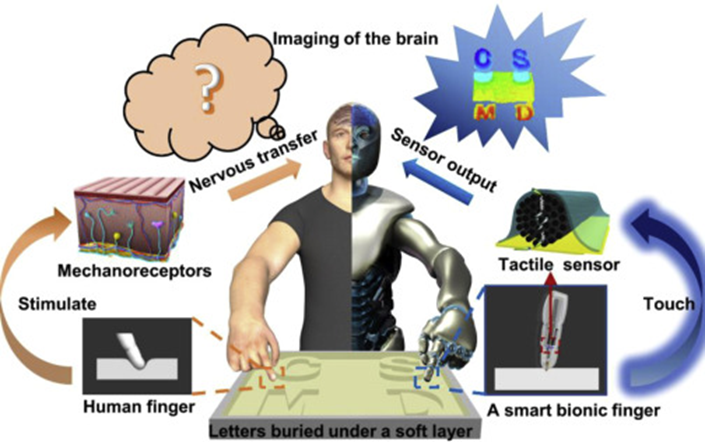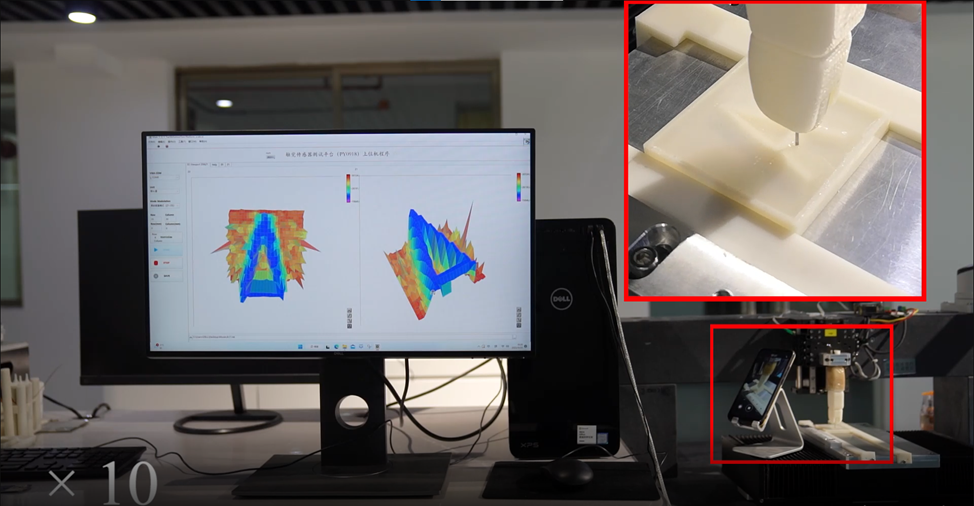
Chinese scientists create bionic finger with sensitivity of human finger
A group of Chinese scientists has created a bionic finger with a built-in haptic feedback system capable of detecting not only the external, but also the internal structure and hardness of the material.
Scientists were inspired by the structure of human fingers, which have the most sensitive perception of touch. According to them, when a person touches his fingers to his own body, he can feel not only the texture of the skin, but also the outline of the bone underneath it.
According to the authors, existing artificial tactile sensors can only recognize and distinguish between external shapes, surface texture and material strength. But they are unable to perceive details under the surface of materials. This usually requires optical technologies such as computed tomography (CT, MRI, PET), but they all have drawbacks.
The smart bionic finger is actually a simulation of a haptic feedback system. A metal cylinder placed on the tip of the finger serves as a contact limb, and carbon fibers serve as mechanical tactile receptors. They are connected to a signal processing module.

Comparison of tactile object recognition between a human and a mechanical finger.
The finger scans the surface of the target object by periodically applying pressure to the surface. This pressure compresses the carbon fibers, and the degree of compression of the material gives information about its relative hardness or softness. This, as well as information about which part of the surface it was recorded on, is sent to a computer, which converts the data into a 3D map.
The authors are testing the bionic finger on a variety of complex objects. For example, they tested the finger's ability to detect and map the letter "A" directly under a layer of soft silicone, as well as other abstract shapes. The finger could even distinguish between the hard and soft inner material and the soft silicone outer coating.

A mechanical finger test on a model of the letter "A."
The researchers also created a 3D printed physical model of human tissue, consisting of three layers of hard polymer (skeleton) and an outer layer of soft silicone. The bionic finger scanned and successfully reproduced a 3D profile of the model's tissue structure, including the location of the "blood vessel" under the "muscle" layer.
In addition, the scientists used the bionic finger to create a map of the internal components of the malfunctioning electronic device. The finger pinpointed exactly where the circuit was disconnected and found the incorrectly drilled hole without penetrating the device from the outer layer.
Specialists plan to improve the bionic finger's capabilities so that it can detect various complex surfaces. They want to achieve that by touching a bionic finger it will be possible to identify any material and reproduce its structure as clearly and error-free as possible.
- Most read
month
week
day
- iPhone users are advised to disable iMessage: What risks are hidden in it? 1367
- New Macs based M4 chip will get up to 512 GB of integrated memory, M4 is expected to be released in late 2024 1118
- Problems with Android 15: NFC contactless payments no longer work on smartphones with updated operating systems 1058
- Pavel Durov gives interview to Tucker Carlson: From 3-hour interview, less than hour appears in final version 918
- What are the best selling smartphones in the world? 857
- Key Google Pixel feature will soon be available on iPhone as well 746
- Wildberries Travel service is already available for Armenia and other CIS countries 729
- The 5 most controversial buildings ever built: Bold design or complete failure? (photo) 721
- AMD Ryzen 7 processor, 24 GB of RAM and only $550: Mechrevo presents inexpensive and powerful laptop (photo) 720
- Black Shark smart ring from Xiaomi to have interesting characteristics and phenomenal autonomy: 180 days of operation without recharging (photo) 680
- Archive
